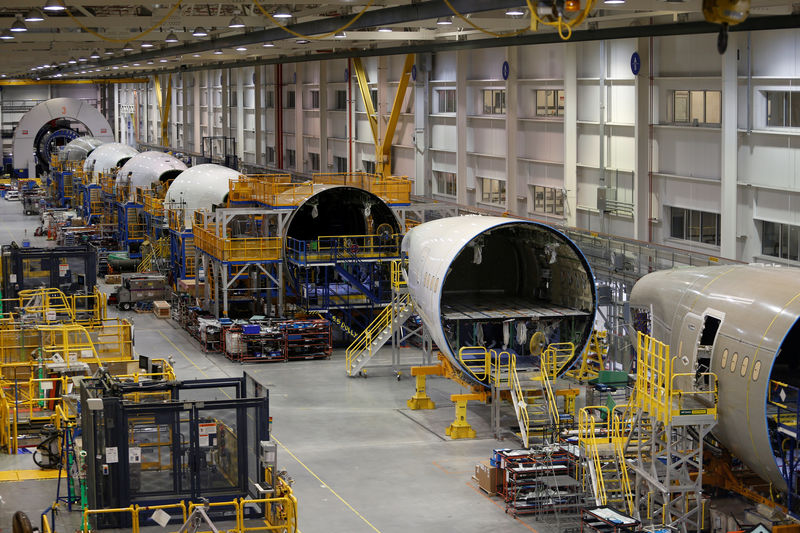(Reuters) – Boeing Co (NYSE:) said on Monday it found no fatigue cracks on in-service Boeing 787 planes that have undergone major maintenance, as the planemaker defended the twin-aisle jet program ahead of a U.S. Senate hearing on Wednesday.
Last week, a Boeing whistleblower said the company had dismissed concerns about the safety of assembly of its 787 and 777 planes that fly international routes. The whistleblower, Boeing quality engineer Sam Salehpour, is set to testify at a Senate hearing about the company’s safety culture.
Salehpour said Boeing failed to properly install gaskets or use a thin piece of material to fill tiny gaps in the manufactured product, an oversight that could lead to premature fatigue failure in parts of the Boeing 787 Dreamliner over time.
His claims, which are being investigated by the US Federal Aviation Administration (FAA), include remarks that he saw workers “jumping on parts of the aircraft to force them to straighten out.”
Boeing is facing a full-blown safety crisis that has damaged its reputation after a panel exploded mid-air on its single-aisle 737 MAX jet on January 5.
On a call with reporters Monday, two senior Boeing officials said there were no signs of airframe fatigue among the nearly 700 Dreamliners in service that have undergone rigorous technical checks after six and 12 years.
“All of these results were reported to the FAA,” said Steve Chisholm, Boeing’s chief mechanical and structural engineer.
Boeing has suspended deliveries of its wide-body 787 jet for more than a year, until August 2022, as the FAA investigated quality problems and manufacturing deficiencies.
In 2021, Boeing reported that about 787 aircraft had improperly sized gaskets, and some aircraft had areas that did not meet skin flatness requirements.
The 787, launched in 2004, had a gap of five thousandths of an inch in an area of five inches, or “the thickness of a human hair,” said Lisa Fahl, vice president of aircraft programs at Boeing Commercial Airplanes. engineering.
She said reports of workers jumping on aircraft parts “were not part of our process.”


